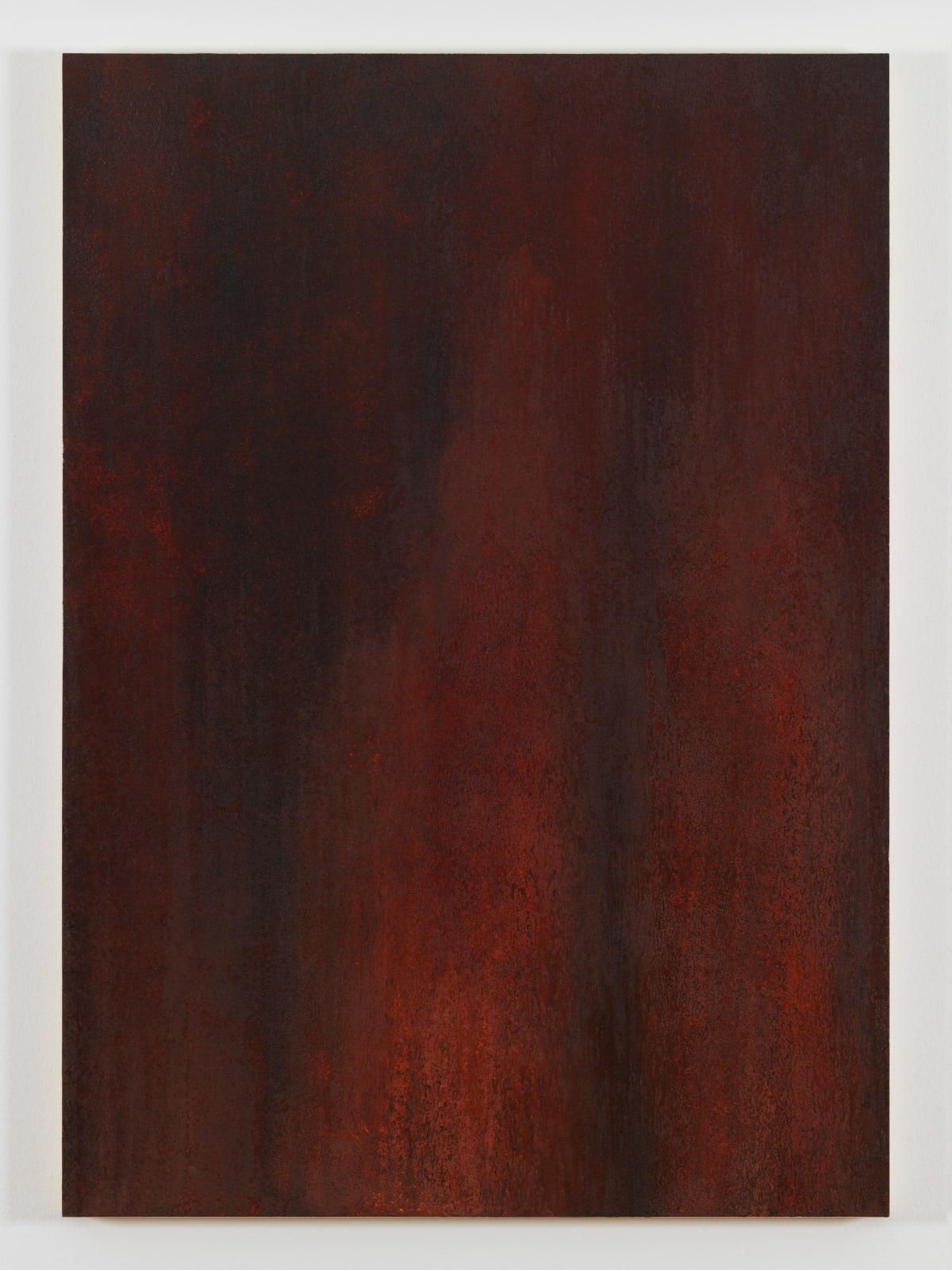Christodoulos Panayiotou
Untitled | Sem título, 2019
acrylic and vermiculite on dibond sheet, mounted on a metal frame
acrílica e vermiculita sobre chapa dibond, montada em estrutura metálica
acrílica e vermiculita sobre chapa dibond, montada em estrutura metálica
120 x 85 x 4 cm
47 1/4 x 33 1/2 x 1 5/8 in
47 1/4 x 33 1/2 x 1 5/8 in
Created for this solo exhibition at Musée d'Orsay the Rust Paintings are crafted in keeping with the tradition of special stage effects and illusionism. The reproduction of the actionion of...
Created for this solo exhibition at Musée d'Orsay the Rust Paintings are crafted in keeping with the tradition of special stage effects and illusionism. The reproduction of the actionion of rusting exemplifies here a sort of tautology. For the material used to depict the rust is made out of metal which, itself, will never rust since it is treated. The artist is showcasing an ageing process that it will not be possible for the painting to ever naturally undergo.
Christodoulos' paintings propose a singular subjectivity, looking at the history of art but with its iconoclasm emptied.
In his words: 'It constitutes the earliest known depiction of the restoration of images in Byzantium after decades of an official ban, the so-called period of iconoclasm. Please point out to the people you accompany the focal point of the composition, which here is intended to be understood as the physical icon in itself (Virgin Hodegetria that iconophiles believed to have been painted by St. Luke the Evangelist). It is a mise en abyme that defines the act of representation and the representation itself as a relic in the making. The icon is on a stage with the curtains drawn; theatre and veneration have always been intimately connected. '
Christodoulos' paintings propose a singular subjectivity, looking at the history of art but with its iconoclasm emptied.
In his words: 'It constitutes the earliest known depiction of the restoration of images in Byzantium after decades of an official ban, the so-called period of iconoclasm. Please point out to the people you accompany the focal point of the composition, which here is intended to be understood as the physical icon in itself (Virgin Hodegetria that iconophiles believed to have been painted by St. Luke the Evangelist). It is a mise en abyme that defines the act of representation and the representation itself as a relic in the making. The icon is on a stage with the curtains drawn; theatre and veneration have always been intimately connected. '
